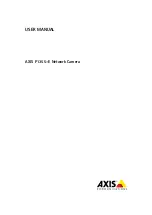
123
The DSCP Mapping Table
DSCP Mapping Table
3G Router
Standard DSCP
Disabled
None
Best Effort
Best Effort (000000)
Premium
Express Forwarding (101110)
Gold service (L)
Class 1, Gold (001010)
Gold service (M)
Class 1, Silver (001100)
Gold service (H)
Class 1, Bronze (001110)
Silver service (L)
Class 2, Gold (010010)
Silver service (M)
Class 2, Silver (010100)
Silver service (H)
Class 2, Bronze (010110)
Bronze service (L)
Class 3, Gold (011010)
Bronze service (M)
Class 3, Silver (011100)
Bronze service (H)
Class 3, Bronze (011110)
Rate Type
: 2 types are provided:
~
Limited (Maximum):
Specify a limited data rate for this policy. It also is the maximal rate for
this policy. As above FTP server example, you may want to “throttle” the outgoing FTP speed to 20%
of 256K and limit to it, you may use this type.
~
Guaranteed (Minimum):
Specify a minimal data rate for this policy. For example, you want to
provide a guaranteed data rate for your outside customers to access your internal FTP server with, say
at least, 20% of your total bandwidth. You can use this type. Then, if there is available bandwidth that
is not used, it will be given to this policy by following priority assignment.
Ratio:
Assign the data ratio for this policy to be controlled. For examples, we want to only allow 20%
of the total data transfer rate for the LAN-to-WAN direction to be used for FTP server. Then we can
specify here with data ratio = 20.
Priority:
Specify the priority for the bandwidth that is not used. For examples, you may specify two
different QoS policies for different applications. Both applications need a minimal bandwidth and need
more bandwidth, beside the assigned one, if there is any available/non-used one available. So, you
may specify which application can have higher priority to acquire the non-used bandwidth.
~
High
~
Normal
: The default is normal priority.
~
Low
For the sample priority assignment for different policies, it is served in a First-In-First-Out way.
Internal IP Address:
The IP address values for Local LAN machines you want to control. (For IP
packets from LAN to WAN, it is the source IP address. For IP packages from WAN to LAN, it is the
destination IP address.)
Internal Port:
The Application port values for local LAN machines you want to control. (For TCP/UDP
Summary of Contents for BiPAC 6200WZL R2
Page 11: ...7 Applications of 6200WZL R2...
Page 12: ...8 Chapter 2 Product Overview Important note for using this router...
Page 95: ...91 3 Choose the directory which you want to delete then click Delete to romove this directory...
Page 96: ...92 Samba Server...
Page 102: ...98 Step 3 To continue click Next Step 4 Select network printer and apply Next button...
Page 104: ...100 Step 7 Click Finish to complete the add printer...
Page 124: ...120 Enter the necessary message and press Reload Delete...
















































